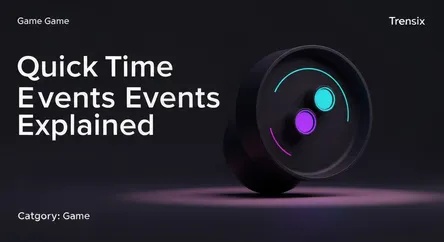Game
Quick Time Events Explained

Discover Quick Time Events (QTEs), the interactive prompts that demand split-second reactions during cutscenes to create cinematic, high-stakes moments.
What is it?
A Quick Time Event (QTE) is a gameplay mechanic where the player must respond to an on-screen prompt within a very short time frame. Typically occurring during cinematic cutscenes, these prompts require a specific button press, stick movement, or rapid tapping to succeed. The goal is to merge passive storytelling with active player involvement, making cutscenes feel more interactive and consequential. First popularized by games like Shenmue, the mechanic has been widely used in action-adventure titles such as God of War and Resident Evil 4 to punctuate dramatic moments.
Why is it trending?
QTEs remain a trending and often polarizing topic in game design. While they can create spectacular, high-stakes cinematic sequences, they are frequently criticized for disrupting gameplay flow and reducing complex actions to a simple button prompt. The debate intensifies as developers experiment with their implementation. Some modern games use them to add tension and player agency, while others are critiqued for overusing them as a crutch. This ongoing discussion about their value and proper use keeps QTEs relevant in conversations about game mechanics and player experience.
How does it affect people?
For players, QTEs can be a source of both excitement and frustration. A well-executed QTE can make a player feel like the star of an action movie, directly controlling a character's heroic feat. However, a poorly timed or unclear prompt can lead to instant failure, forcing a replay of the scene and breaking immersion. This can be particularly challenging for players with slower reflexes or physical disabilities, raising important accessibility concerns. As a result, many modern games now offer options to simplify or disable QTEs, allowing more people to enjoy the narrative without being blocked by a reaction-based test.